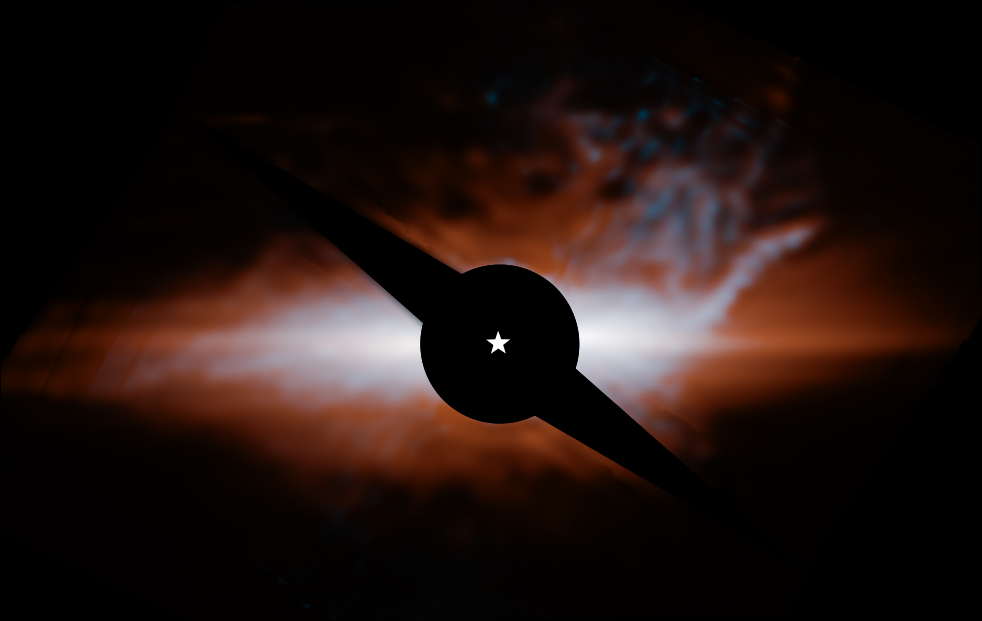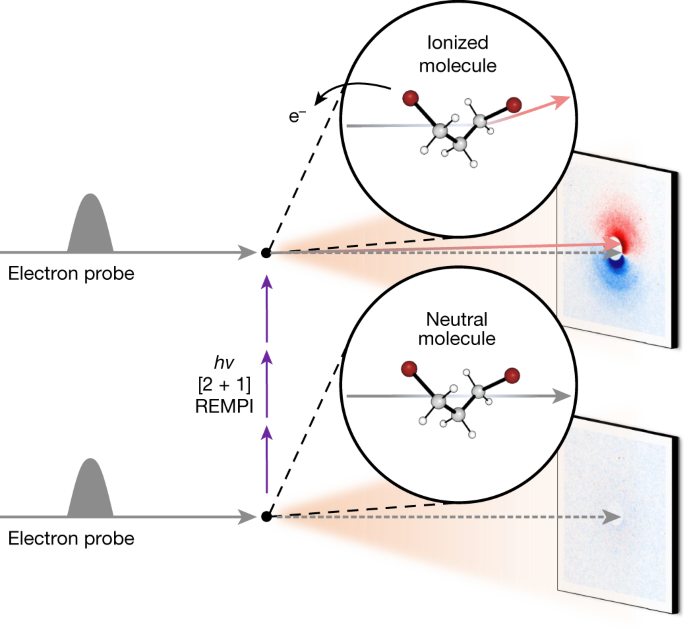2024-01-10 NASA
 This image from Webb’s MIRI (Mid-Infrared Instrument) shows the star system Beta Pictoris. An edge-on disk of dusty debris generated by collisions between planetesimals (orange) dominates the view. A hotter, secondary disk (cyan) is inclined by about 5 degrees relative to the primary disk. The curved feature at upper right, which the science team nicknamed the “cat’s tail,” has never been seen before. A coronagraph (black circle and two small disks) has been used to block the light of the central star, whose location is marked with a white star shape. In this image light at 15.5 microns is colored cyan and 23 microns is orange (filters F1550C and F2300C, respectively).
This image from Webb’s MIRI (Mid-Infrared Instrument) shows the star system Beta Pictoris. An edge-on disk of dusty debris generated by collisions between planetesimals (orange) dominates the view. A hotter, secondary disk (cyan) is inclined by about 5 degrees relative to the primary disk. The curved feature at upper right, which the science team nicknamed the “cat’s tail,” has never been seen before. A coronagraph (black circle and two small disks) has been used to block the light of the central star, whose location is marked with a white star shape. In this image light at 15.5 microns is colored cyan and 23 microns is orange (filters F1550C and F2300C, respectively).
NASA, ESA, CSA, STScI, C. Stark and K. Lawson (NASA GSFC), J. Kammerer (ESO), and M. Perrin (STScI).
◆スペインのAstrobiology CenterのIsabel Rebollido率いる研究チームは、主デブリディスクと二次デブリディスクの組成を調査し、予想を超える結果を得た。特に、二次デブリディスクから南西部に延びる猫の尾のような形状の新しい構造が明らかになった。この猫の尾は、有機性の暗い微細な粒子で構成されており、衝突による最近のダスト生成イベントによるものと推定されている。
◆研究者たちは、これが約100年前に起こった可能性が高く、将来の研究と検証が求められている。ベータ・ピクトリスの状態は予想以上に複雑で活動的であり、新しい知見が得られている。
<関連情報>



